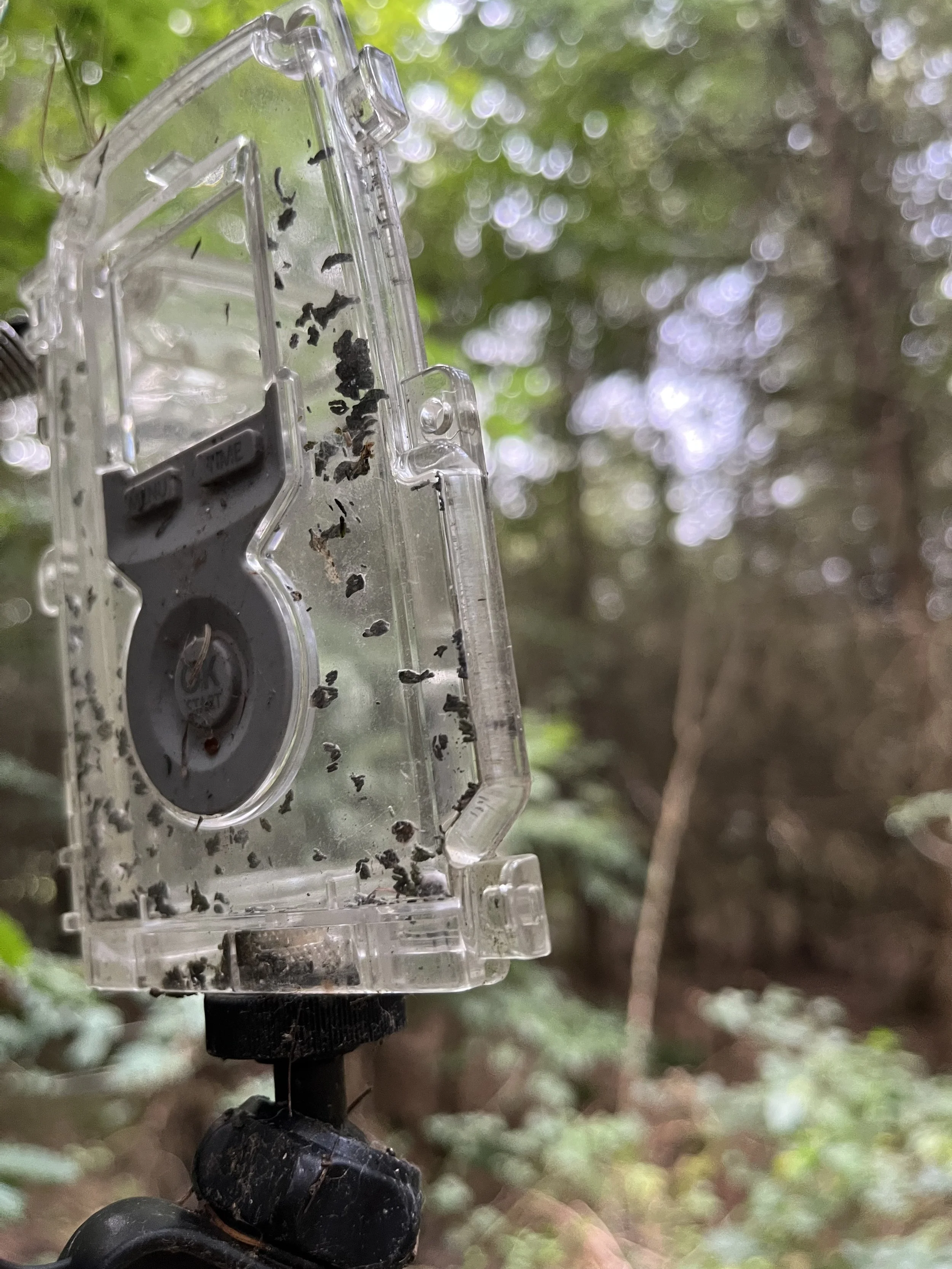Phenomenal Grains
Amelia Groom
2023
Mainstream nature photography and wildlife documentary genres have long been cradles for the fetishization of super high-res imagery. Think of something like the BBC’s Planet Earth series or the nature photos that win National Geographic’s prizes; it is all about high-definition capture with the most advanced and expensive lenses, the highest numbers of megapixels, the fastest shutter speeds, the sharpest resolutions, and the best zoom functions for the most penetrating close-ups.
In Martina O’Brien’s of ephemeral measure, we encounter a very different image quality (and image ethos). The project consists of a network of digital cameras installed in the outdoors (mostly in County Kildare, Ireland), generating time-lapse images that form a phenological resource. Phenology is the scientific study of changes and periodic events in nature, including climactic shifts and seasonal and biological life cycles (the word comes from phenomenon + logy; it is not to be confused with the racist pseudoscience of phrenology).
While science likes its images crisp, clean, consistent, and ostensibly objective, however, of ephemeral measure offers low-res depictions that are frequently marked by blurs, interruptions, and gaps. The relatively cheap cameras used throughout the project garner grainy and glitchy scenes. Raindrops form smudgy distortions across the lenses. Fog, pollen, snow, and dust gather and mess with the image clarity. Sunlight streaks through with bursts of intensity, so nothing else can be seen. Some of the pictures show up as ghostly apparitions; sometimes the cameras stop working altogether.
Well-funded scientific phenology image networks (like the PhenoCam project in the US) have their high-res cameras hooked up through the internet so their data can be remotely generated and automatically accumulated, ad infinitum, in big data centres. In contrast, of ephemeral measure requires O’Brien to visit each site in person every two to three weeks, so that she can check the functionality of the camera and retrieve its images on a USB stick, before uploading them on her laptop. “I, as the artist, serve as the conduit; the embodiment of the network,” she remarks.
In National Geographic’s ultra-high-definition landscape and wildlife photographs (and throughout their lineage in the work of figures like Ansel Adams), “nature” is constructed and depicted as an external object, with all traces of the photographer’s presence erased. The aim is to make the image look like it produced itself through disembodied magic. In of ephemeral measure, this disappearing act gives way to a more relational mode of looking. The automated images are produced remotely, but since the apparatus requires continual tending to, O’Brien needs to physically show up at the sites. As a result, she has developed a different kind of relationship with these places; one that is more in tune with the embodied, affective shifts of the seasons, climactic conditions, and various scales of changes and cycles.
In 2022, she also held a series of walking workshops (“walkshops”) for ecological study at the camera locations, together with members of the local communities and various collaborators on the project (including agricultural workers and conservationists). The automated images produced by the cameras during these events sometimes show the workshop participants engaging with each other and with the sites, leaving traces of embodied presence and collective involvement in the areas that are under observation.
In addition to the twelve cameras that O’Brien has set up in various sites in Ireland (including forests, gardens, agricultural sites, a river site, and a bog site), a thirteenth camera has also been installed at Aalto University in Finland, in collaboration with Open Forest Collective. This camera is monitoring the process of decay in two old linden trees that were cut down and placed at the centre of a garden on the university campus. While the wood gradually rots, new life also begins to sprout from the ground. When it comes to trees and soil and their intertwinement, death cannot be separated out from life. The dying and the living run through each other; rot facilitates and includes growth, which leads to decay, which feeds into the roots from which new growth sprouts, always entangled with ongoing processes of composting.
Recently, while this Finnish tendril of the project has been monitoring an ongoing process of decay, decomposition, and regeneration, O’Brien discovered that one of the longest-operating cameras back in Ireland has, after about twenty months in the outdoors, been permeated with an unidentified organic growth (moss? fungus? tree sap? algae? some kind of symbiotic hybridity?). The cameras used throughout of ephemeral measure are sealed in ostensibly “weatherproof” plastic cases, so it was not supposed to happen, but this growth within the recording apparatus arrives as a reminder of inseparability. Through this accidental mark of environmental entanglement, the camera can no longer be imagined as an objective machine that simply “captures” nature as an external object. Instead, the apparatus is interfered with and imbued by its own setting. The land begins to eat into the machine. Place affirms itself as a responsive process – one that is not separate from us.
Amelia Groom is a writer and researcher who is currently working on a book about the environmental art and antifascist activism of Claude Cahun and Marcel Moore. www.ameliagroom.com



